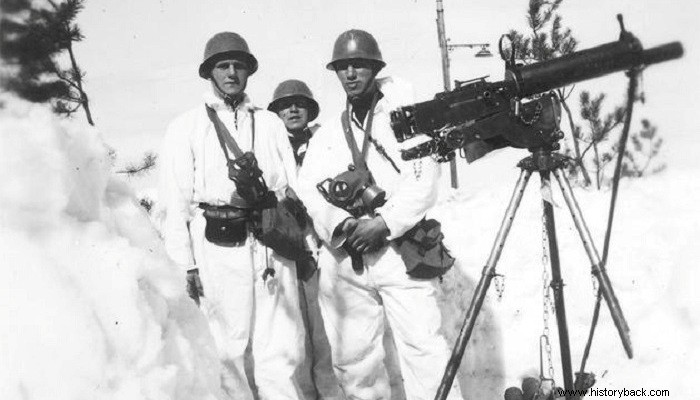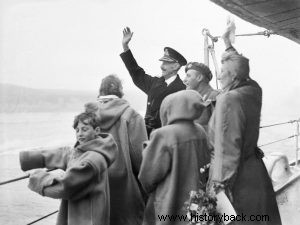
On April 9, 1940, the Germans launched a surprise attack against Denmark and Norway. The Germans launched their attack on Norway at various points and attempted to capture the king of the small Scandinavian country, Haakon VII. The Germans believed that the capture of the king would also mean the immediate surrender of the Norwegians.
The invasion went badly for the Germans, initially, in the Oslo area and so the Norwegian royal family and government found time to move away reaching the city of Elverum.
The hunt for the Norwegian king was undertaken by an elite company of German paratroopers under Squadron Leader Eberhard Spieler, who had previously served as a military attaché at the German embassy in Oslo and knew faces and things.
The Germans, about 120 well-armed paratroopers, boarded abandoned Norwegian army buses and vehicles and pursued the king's phalanx which was guarded by just a platoon of 30 royal guards of the 1st Guards Company. When the fugitives arrived near the town of Elverum it was decided to try to stop the Germans so that the kings and the government could escape. In addition to the guards, several volunteers, a few soldiers and several civilian members of the local shooting club, led by Major Olaf Helsen, gathered. .
The Norwegians only had rifles and two old Colt M/29 machine guns (water-cooled Browning sub. 1917). The Norwegians decided to stop the Germans by creating a cut-off near a farm in the village of Midskogen. They hoped to destroy at least the German vehicles so that the pace of the pursuit would slow down. The Norwegians closed the road by barricading every vehicle they could find and positioned their machine guns so that they were reaping along the road. The riflemen lined up on both sides of the road.
The battle of the street
Around 02:00 in the morning of April 10, 1940, the German vehicles found themselves in front of the barricade and, unable to overturn it, stopped. However, they stopped a little further back than the Norwegians expected. The latter tried to take up new fighting positions but received heavy fire from the well-armed and elite Germans.
Soon the farmhouse caught fire from German tracer fire. The fire illuminated the nights and its Norwegian defenders against whom the Germans opened heavy fire. Due to the fact that the battle had started further away than the Norwegians had anticipated, their two machine guns were unable to fire. When the Germans approached again the machine guns "refused" to fire as their fluids had frozen. they had to warm them up managing to get one of them working.
The fire of the only Norwegian machine gun halted the German advance, allowing the Norwegian riflemen to withdraw to their original positions. After about an hour, Zpieler was mortally wounded and his men retreated, giving up the pursuit, defeated. The Norwegians then continued their movement and reached Sagstuen where they were reinforced by hopefuls who had also escaped.
The Germans admitted only five dead, in keeping with their standard policy of admitting small casualties. Among the dead, however, was their leader. They did not say the number of their wounded. The Norwegians had three wounded – one mortally – out of 90 men who fought. This small-scale conflict saved King Haakon. The Germans the next day tried to kill him by bombing the town of Elverum but failed.
King Haakon contacted Sweden to cross the border which was only 16 km away but the Swedes told him that if he crossed the border they would arrest him! Very angry the Norwegian king, who refused to recognize the "government" of the traitor Quisling and finally on June 7 boarded a British cruiser and found himself in London.
Note The video is an excerpt from a 2016 Norwegian film about the battle.

The king and his family depart for Britain.
